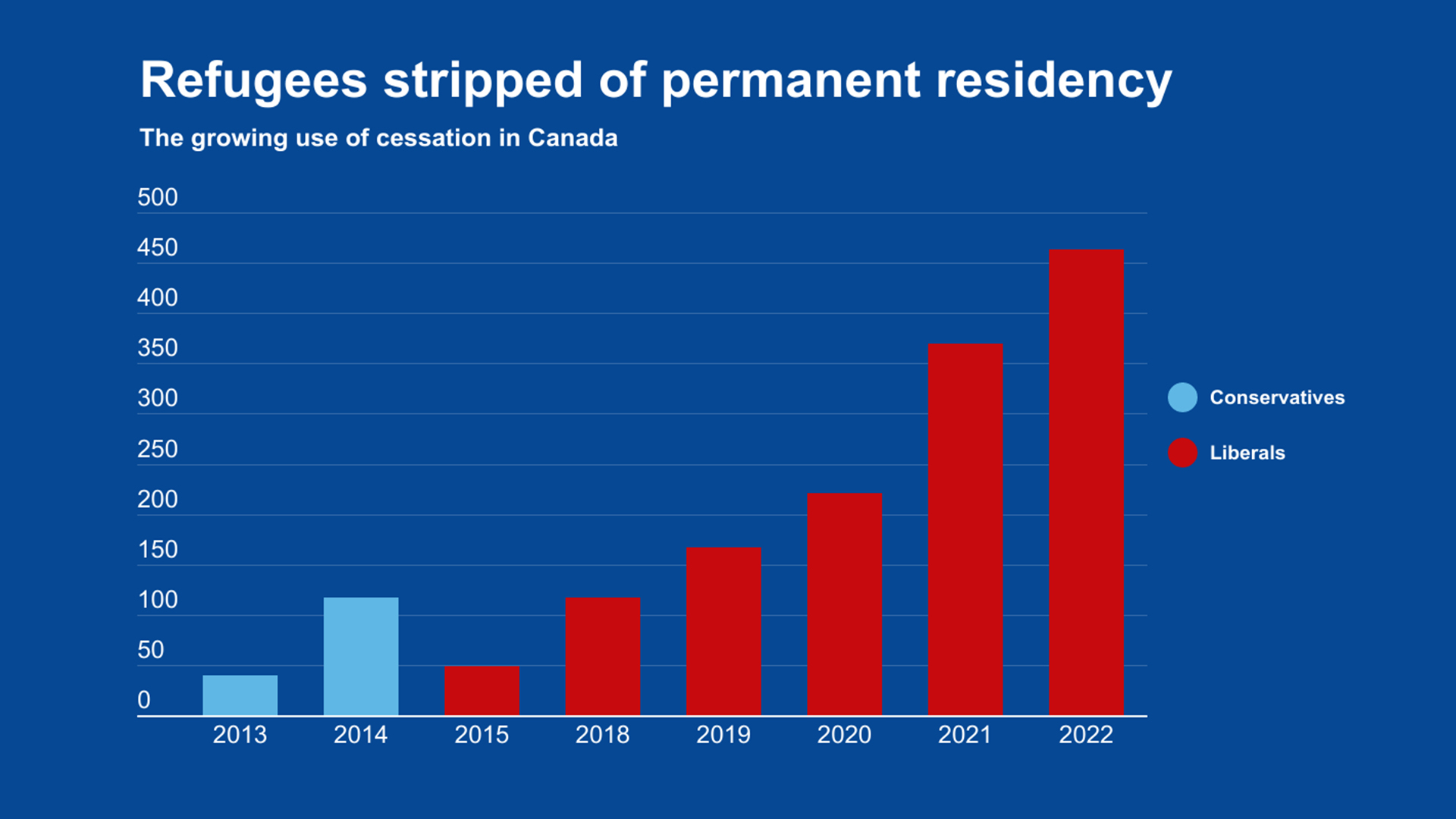
(Version française disponible ici)
People who arrive in Canada to claim refugee protective status are required to endure an invasive and intensive hearing process to prove their claim is genuine. But a legal process introduced in 2012 means that once their claim is accepted, their status in Canada as a permanent resident (PR) is not guaranteed for life.
Through a process called cessation, former refugees can be stripped of their refugee and PR status at any future time and deported to their country of origin, upending their lives and potentially placing them in danger.
Although Canada is not the only country in the world where such a policy exists, revoking PR status through cessation is a degradation of human rights here, forcing former refugees to live in limbo and denying them the full rights of other permanent residents. The law should be repealed.
The origins of the process for stripping permanent residency
Using cessation to revoke refugees’ PR status was included in the Protecting Canada’s Immigration System Act, passed by the former Conservative government in 2012, and was publicly promoted as a way to prevent fraud within the refugee system. In practice, though, it permanently threatens the PR status of all former refugees who have made genuine, non-fraudulent asylum claims.
The cessation process can be started any time if a refugee who has been granted PR status travels back to their country of origin, even to care for a sick or dying family member; applies for a passport from the country of origin; or uses a passport from the country of origin to travel to a third country (not the country of origin), even years after claiming refugee status.
Cessation thus specifically targets former refugee claimants who have been settled in Canada for long periods of time, despite the facts their claims were already examined for potential fraud and found valid by the Immigration and Refugee Board (IRB) of Canada, the independent legal decision-making body in charge of determining asylum claims.
Contravening the Canadian asylum system
The Canadian asylum assessment system is known throughout the world for its fairness and effectiveness. A big part of this fairness is its use of a temporally limited test of protective need at the time that the claim is decided.
This means that claimants are not required to demonstrate that they will always be in danger should they return to their country of origin, just that they would be in danger at the time of their refugee hearing.
A critical element of the Canadian system’s success is the fact it provides a durable, long-term PR status to claimants. It allows them to settle down, integrate and get on with their lives as members of Canadian society.
Revoking PR status through cessation overturns the decisions of the IRB and contravenes the logic behind Canada’s refugee system. By potentially removing their PR status, it places former refugee claimants in the position of facing deportation and separation from their established lives, careers and support networks.
Permanent residents in limbo
It is both common sense and a principle of law called the “right to remain” that sustained, long-term residence in a geographical location gives a person the “right” to remain there as a resident.
Cessation extends the timeframe of the initial refugee test, meaning that refugees have to prove that they continue to be in a state of constant danger in their country of origin to maintain their status in Canada.
The process ignores their genuine claim to settled status and suspends them in limbo. Now they must re-enact for authorities their threatened status. This denies them the liberty of being able to move on with their lives and past their victimhood.
In fact, this policy means that former refugees who are permanent residents lack the basic rights of every other permanent resident in this country. They suffer the indignity of being unable to travel to their country of origin, while all other types of permanent residents face no such travel restrictions or consequences for doing so.
The increased use of the policy, as indicated in the figure above, is a direct contradiction of the current Liberal government’s pro-immigrant and pro-newcomer messaging. It hurts Canada’s standing on the world stage. It’s not good for Canadian society. Most importantly, it is devastating and debilitating for the former refugees who are in this unnecessary limbo, indefinitely uncertain if their PR status confers true permanency in the country.
If former refugees with PR status are truly permanent residents, then the Liberal government must implement refugee policy that reflects this. Repeal the law that revokes refugees’ permanent status through the process of cessation.








